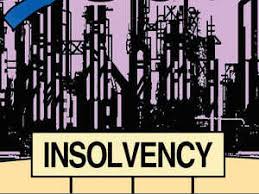-An article by Lavanya Goinka
Introduction
In the ever-evolving landscape of insolvency law, the introduction of the Pre-Packaged Insolvency Resolution Process (PPIRP) in India in 2021 marked a watershed moment. PPIRP represents a radical departure from traditional insolvency proceedings and has the potential to significantly reshape the way distressed companies navigate the labyrinth of insolvency. This article delves into the intricacies of PPIRP, examining its genesis, key provisions, implications, and the challenges it poses.
Genesis of PPIRP
- The Need for Speed and Efficiency
The genesis of PPIRP can be traced back to the imperative for speedy and efficient resolution of distressed assets. Traditional Corporate Insolvency Resolution Processes (CIRPs) often entailed protracted litigation, putting a strain on the resources of insolvent entities and creating uncertainties for creditors. PPIRP was conceptualized to streamline the process, reduce the burden on the National Company Law Tribunal (NCLT), and provide a viable alternative for swift resolutions.
- Key Provisions of PPIRP
- Pre-Packaged Resolution Plans
At the heart of PPIRP lies the concept of pre-packaged resolution plans. Under this mechanism, the debtor company, along with its creditors, negotiates and agrees upon a resolution plan before initiating the formal insolvency proceedings. This pre-negotiation aspect differentiates PPIRP from conventional CIRPs, where resolution plans are typically formulated after the initiation of insolvency.
- Speedy Commencement of Proceedings
PPIRP mandates that the resolution application be filed along with the pre-packaged resolution plan. This expedites the initiation of proceedings, as the NCLT can promptly assess the plan’s feasibility and merits. The reduced lead time between application and approval is a pivotal feature of PPIRP, fostering swifter resolutions.
- Role of Resolution Professional and CoC
While PPIRP incorporates pre-negotiated plans, it still involves the appointment of a resolution professional (RP) and the formation of a Committee of Creditors (CoC). The RP oversees the execution of the resolution plan, and the CoC plays a crucial role in approving the plan and monitoring its implementation.
- Implications of PPIRP
- Efficiency and Cost Savings
One of the most significant implications of PPIRP is its potential to enhance efficiency and reduce costs. By pre-negotiating the resolution plan, parties can avoid protracted litigation and associated legal expenses. This efficiency aligns with the overarching goal of expeditious insolvency resolution.
- Preservation of Business Value
PPIRP can be particularly advantageous for businesses aiming to preserve their going concern value. By swiftly finalizing a resolution plan, companies can minimize disruptions, retain essential assets, and safeguard their market position, ultimately benefiting creditors and stakeholders.
- Minimizing Uncertainty
PPIRP’s inherent transparency and predictability help minimize uncertainty for all stakeholders. The pre-negotiated nature of the process allows parties to have a clear understanding of the proposed resolution, reducing the scope for disputes and legal challenges.
- Challenges Posed by PPIRP
- Eligibility and Abuse
One of the primary challenges is defining the criteria for eligibility under PPIRP. Ensuring that only genuinely distressed entities avail themselves of this mechanism while preventing abuse of the process is a complex task. Striking the right balance is crucial.
- Inadequate Legal Precedent
Given that PPIRP is a relatively new addition to India’s insolvency framework, there is a shortage of legal precedent and jurisprudence. This dearth of guidance can create uncertainties and challenges for practitioners, creditors, and the NCLT.
Conclusion
The Pre-Packaged Insolvency Resolution Process (PPIRP) represents a paradigm shift in Indian insolvency proceedings. It offers a unique and expedited approach to resolving distressed assets, promising efficiency, cost savings, and a reduced burden on the legal system. However, the successful implementation of PPIRP hinges on addressing eligibility criteria, preventing abuse, and developing a robust body of legal precedents. As PPIRP continues to evolve, it holds the potential to be a potent tool in the arsenal of insolvency practitioners, transforming the landscape of corporate insolvency in India.
